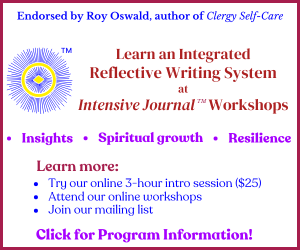Resource Reviews for Continuing Education and Reference February 2020:
Addiction and Pastoral Care
Sonia E. Waters (Grand Rapids, Michigan: William B. Eerdmans, 2019, 226 pages, softcover)
What picture forms in your mind when you hear “heroin addict, alcoholic, crack addict or marijuana addict”? Do you see “a criminal, a victim, a moral agent or a medical patient” (1-2)? What role have pastoral caregivers played in exacerbating or healing those conditions? What is your theology of addiction? How does your faith inform your understanding of addiction? In seven chapters a pastoral theologian and volunteer chaplain explores the many dimensions of “the living human web of addiction” (12).
The opening chapter explores “some of the common discourses associated with addiction: the moral and the medical model, the diagnostic criteria, and the many proposed causes of addiction, ultimately … reframing addiction as a soul-sickness” (16). The moral model’s Christian history is reviewed and rejected, in part because it wrongly identifies moral failings as the cause, not the symptoms of addiction. Multiple sources of causality lead to the all-of-the-above choice. Addiction understood as the pursuit of pleasure gone badly is rejected. Instead, it’s a tragic attempt to manage physical and/or psychic pain that only brings more pain and that “further isolates us from others, and guilt and self-loathing [that] inhibit a positive relationship with God” (36).
The second chapter, “Your Brain on Drugs,” offers two implications for spiritual care. First, “the most important thing to remember in all this talk about neurons is that the brain that first chooses to take the drug is not the same brain that, years later, has to make the decision to stop. This is crucial to our compassion.” And second, “what seems particularly spiritually evil about addictions is that they progressively cause more of the exact problems that they first appear to cure” (44-45).
In the next two chapters she explores attachment theory, suggesting that dysfunctional attachments, as well as trauma and post-traumatic stress, lead to “the self-medication hypothesis [which] claims that individuals don’t actually seek pleasure, but instead emotional and mental relief through their addictive behaviors” (59), which may initially improve functioning but in the end proves destructive. Second, addictions can also be understood as failed attempts to cope with the social sins of “racism, homophobia and socioeconomic insecurity” leading to the conclusion that pastoral care includes “community resilience-building and political advocacy” (85).
Using the metaphor of legion to describe the multiplicity of the causes and forms of addiction leads to a theological reflection on the Gerasene demoniac described in Mark’s Gospel and the conclusion that it “helps us to better understand the plight of addict’s soul in distress” (105). She identifies four evils that emerge out of addiction: “loss of hope,” destruction of “the good in our relationships,” turning inward where “fear and resentment can begin to dominate,” and “an understanding of God that has become fixed on punishment or abandonment” (117-121). While I counted over twenty prior suggestions for pastoral caregiving, she offers a more extensive explication while discussing this fourth evil.
In the final two chapters she describes the broader skill sets of an addictions counselor and spiritual interventions derived from motivational interviewing theory and applies them to the addiction recovery stages of change model. Author, subject and scripture indexes, endnotes, and a bibliography are included. This is a highly recommended must read for anyone invested in or fleeing from providing pastoral care to addicts but also describes skills that would benefit all of our spiritual caregiving.
Reviewed by Roy F. Olson DMin, a retired BCC who specialized in behavioral health chaplaincy.
Einstein and the Rabbi: Searching for the Soul
Naomi Levy (New York: Flatiron Books, 2017, 338 pages, hardcover, softcover, Ebook, Audiobook, Audio CD)
A chaplain friend showed me a book that a Jewish friend had given her called Einstein and the Rabbi: Searching for the Soul. I decided to order and review it, and I am so glad I did! I needed this book, and I didn’t even know it. The author’s words spoke to me on so many levels.
Naomi Levy is the founder and rabbi of Nashuva, “a groundbreaking Jewish spiritual outreach community based in Los Angeles” (back cover). She was a member of “the first class of women to enter the Jewish Theological Seminary’s rabbinical school” (back cover), a fulfillment of her dream from age four. This is her fourth book, which won the 2017 Nautilus Award in the Religion/Spirituality of Western Thought category.
Of course, the title is intriguing and weaves ribbon-like throughout the book. Rabbi Levy encountered a letter by physicist Albert Einstein describing his view of the universe; Einstein embraced the belief that the universe is composed of the oneness of us all: “The striving to free oneself from this delusion [that we are all separate] is the one issue of true religion. Not to nourish the delusion but to try to overcome it is the way to reach the attainable measure of peace of mind” (13).
These words were written in a letter, and Rabbi Levy found herself driven to discover why Einstein wrote the letter and to whom. Her quest led her in surprising directions, person by person, leading her to interview survivors of World War II concentration camps as well as friends and family of Einstein’s correspondent, and eventually to a library collection of letters, which finally resolves her questions (but I won’t give the answer away!).
Stories abound in this volume, not only of Rabbi Levy’s encounters with members of her congregation and other seeking souls, but also her personal stories of deep, deep griefs from the deaths of her parents and her own unexpected surgeries. She shares rabbinic wisdom that she has learned over the years through her conversations, which makes the book very easy to read.
The organizational structure of the book (three sections) itself reflects rabbinical wisdom. In order to answer the existential questions of a young man whose best friend had died, Rabbi Levy shares the Jewish mystical tradition that the soul is composed of three layers, similar to the three layers of a flame:
- Nefesh, the Life Force: “The mystics taught that the lower soul is like the blue color at the bottom of a flame. . . . It is the soul we share with all living things” (37).
- Ruach, the Love Force: “The mystics said Ruach is like the yellowish light that appears at the higher level of a flame. Ruach is the seat of emotion, it’s the door to intimacy” (38).
- Neshama, the Eternal Force: This “is the light of a flame that’s not visible to the human eye. . . . the uppermost level of soul, the place within us that allows us to experience unity with all things in this world and beyond” (38).
These three images focus the material in the sections, which all deal with the many, many ways that our souls need tending. The connection with Einstein’s quotation is clear.
A final gift in the book is the plethora of blessings. At the end of each chapter, Rabbi Levy blesses us as readers with a blessing centered around the chapter’s topic. May her final blessing bless you right now:
May you come to experience the “Me within me.” May you be blessed with eyes to see the oneness your soul has been longing to show you. Know who you are. The seal of the Creator is on you. May you see your World to Come in this world. May you experience longs days full of meaning and may you live to give nachas, deep soul pleasure, in the Creator who dreamed you into being. And may God smile and sigh a deep sigh of relief and laugh with pure joy upon seeing your soul fulfill its call. Amen.(323)
This book will be useful to anyone in need of some spiritual refreshment.
Reviewed by Tamara R. Flinchum MDiv BCC, chaplain at AnMed Health in Anderson, SC.



